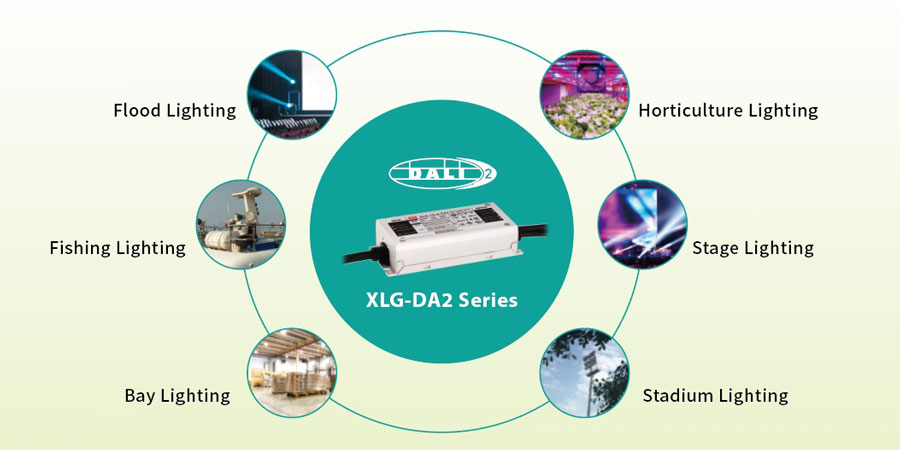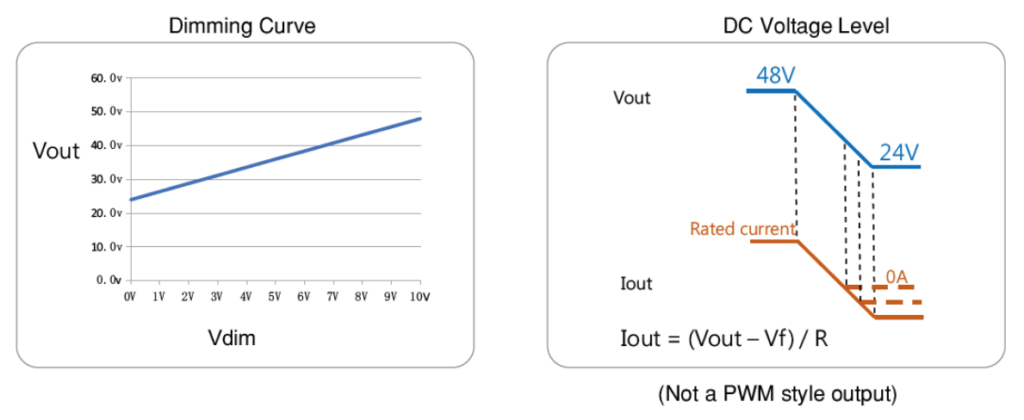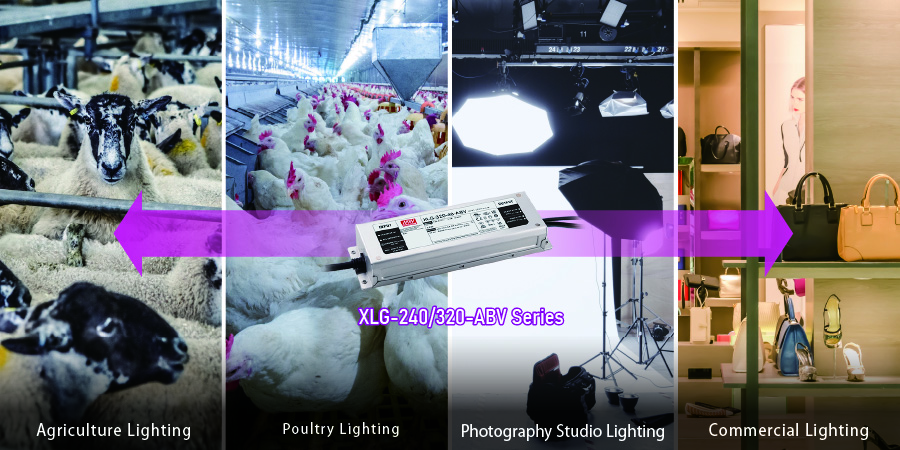With the introduction of Light Emitting Diode (LED) technology, the agricultural industry has seen a significant change in recent years. With the availability of a stable and energy-efficient lighting solution, this invention has completely changed the face of agriculture production.
One brand that has been making waves in the LED industry is MEAN WELL, a leading manufacturer of LED drivers. The company has created a flicker-free dimming power supply with a constant voltage output for unique lighting fixtures used in poultry illumination. This power supply is offered to customers worldwide in a standard power supply configuration.
Join us on a journey with MEAN WELL to explore the ways in which LED technology, along with LED drivers, have transformed farming and increased productivity and efficiency.
Benefits of LED Lighting in Agriculture

- Energy Efficiency: With significantly lower energy consumption than conventional lighting sources like fluorescent or incandescent bulbs, LEDs stand out for their energy efficiency in agricultural lighting. This reduces carbon emissions while simultaneously lowering electricity costs. LEDs are increasingly essential for growers that care about the environment as sustainable farming gains traction.
- Spectrum Control: One of the main benefits of agricultural LEDs is their capacity to accurately control light spectrums, meeting the unique requirements of diverse crops at different stages of growth. Growers can optimise plant growth and improve crop quality and output by adjusting the light spectrum. This can have a significant impact on flowering, fruiting, and overall plant structure.
- Longer Lifespan: LED lights have a 100,000-hour lifespan, which is longer than that of traditional lighting and reduces downtime and maintenance expenses. Their solid-state construction, which eschews brittle parts like filaments or glass, accounts for their resilience. This lifespan is ensured by LED drivers, which protect against voltage changes and provide steady power.
- Heat Management: Conventional lighting systems increase the risk of fire and can cause heat-related damage to crops. LED lights in agriculture reduce crop damage concerns and enable placement closer to plants because they create far less heat and dissipate it efficiently. This closer placement reduces shading and maximises light distribution for even development.
The Role of LEDs in Agriculture
1. Power Regulation
LED drivers serve as the backbone of LED lighting systems, providing the necessary power regulation and ensuring consistent and efficient performance. They convert the incoming AC voltage to the appropriate DC voltage required by the LEDs, protecting them from voltage spikes and fluctuations.
The conventional constant voltage method of dimming power supplies often uses PWM (Pulse-Width Modulation) output designs; nevertheless, flicker noises are frequently generated during PWM dimming. To deal with the problem, as mentioned in the introduction, MEAN WELL has developed flicker-free LED dimming power supplies with constant voltage output which further enhances the stability and reliability of LED lighting in agriculture. An example of a MEAN WELL LED driver is the XLG LED driver series with constant power mode output.
2. Dimming Capabilities
Growers have more control over light intensity when they use LED drivers with dimming features. This function is especially helpful when crops require varied amounts of light at different stages of growth. It is possible to replicate natural lighting conditions and encourage healthy plant development and optimal photosynthesis by varying the intensity of light. Farmers can also save energy by dimming during times when full light intensity is not needed. The below Figure 1 shows dimming ways of output voltage.

3. Remote Monitoring and Control
LED lighting systems may now be remotely monitored and controlled thanks to developments in LED driver technology. Today, agriculturalists use a mobile application or a central management system to monitor and modify illumination factors including timing, spectrum, and intensity. With this degree of automation and control, operations are streamlined, labour costs are decreased, and growers can make real-time modifications to maximise crop development.
4. Compatibility with Smart Farming
LED drivers are integral to the integration of LED lighting systems with smart farming technologies. By linking LED drivers to automation systems and sensor networks, it is possible to customise lighting schedules and dynamically adjust lighting conditions based on real-time data. Through the integration of improving precision farming techniques, farmers can maximise resource allocation, raise crop quality, and reduce waste.
Optimising Poultry Growth with Advanced Lighting Systems

Lighting installations for poultry farms nowadays are customised based on their size and usually have constant voltage configurations to meet the wide range of farm sizes. In order to guarantee consistent dimming throughout these systems, length restrictions must be taken into account. It’s critical to take care of poultry’s physiological needs in a thorough manner because of their sensitivity to environmental changes, particularly temperature swings and flickering lights.
Chicken growth is greatly influenced by the type, duration, and intensity of lighting, which promotes faster development, higher energy levels, and increased feed intake. Using flicker-free dimming power sources is crucial to achieving these ideal circumstances and making sure the lighting meets the needs of the birds.
Why Choose LEDs for Agriculture?
LEDs and LED drivers have revolutionised agriculture, offering the agriculture industry a powerful and efficient lighting solution. Their longer longevity, customisable spectrum, and energy-saving capabilities promote agricultural production and sustainable farming.
In order to give farmers more flexibility and control over their lighting systems, LED drivers are necessary for their operation. Agriculture has a more optimistic future as LED technology develops. LED illumination is poised to revolutionise farming, with businesses such as MEAN WELL at the forefront of innovation.
Disclaimer
The information provided in this article is for educational purposes only. Always consult with experts and do thorough research before implementing any changes to your agricultural lighting systems.











